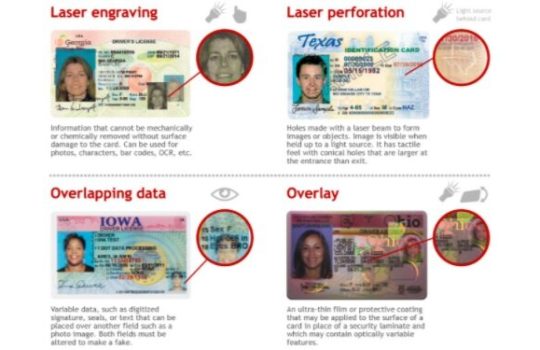Scannable Id Card Charges
2023-04-02 2023-04-02 21:25Scannable Id Card Charges

Scannable Id Card Charges
Scannable ID cards have become a must-have in many institutions, including businesses, airports, hospitals, and educational institutions. With the rise of digital technology, scannable ID cards have offered a secure and time-efficient way for organizations to manage access to their premises, information, and services. These cards utilize various scanning technologies, from magnetic strip and barcode to RFID and biometrics, to verify identity and grant authorized access.
In this article, we will shed light on various aspects of scannable ID card charges. We will explore the factors that affect the cost of ID cards, the types of printing technologies and materials used, and the benefits of investing in high-quality scannable ID cards.
Factors Affecting Scannable ID Card Charges
Pricing for scannable ID cards varies depending on several factors, including the printing technology, material, the quantity of cards, and the level of security required. Here are some of the primary factors that determine how much you will pay for scannable ID cards:
Printing Technology
Printing technology is one of the main factors that affect scannable ID card charges. There are two primary printing methods: thermal transfer and dye-sublimation.
Thermal Transfer: This printing method is ideal for printing black and white scannable ID cards. Thermal transfer printing involves transferring ink from a ribbon to a card using heat. The process creates a high-quality image that is resistant to wear and tear.
Dye-sublimation: This printing method is ideal for producing full-color scannable ID cards. Dye-sublimation involves transferring the ink from a ribbon to the card using heat and pressure. The result is a photo-quality image that is durable and long-lasting.
Material
The choice of material used to make the scannable ID card also plays a significant role in determining the cost. Common materials include PVC, PET, and composite materials. PVC is the most popular choice as it is affordable and durable.
Quantity of Cards
The quantity of scannable ID cards required also affects the cost. The price per card usually decreases as the number of cards ordered increases. Some ID card printing companies offer discounts for bulk orders.
Security Features
The level of security required is another factor that affects scannable ID card charges. More advanced security features such as RFID chips, holographic overlays, and microtext increase the cost of producing ID cards.
Types of Scannable ID Cards
There are several types of scannable ID cards in the market today. They serve different purposes and are designed to meet specific needs. Here are some common types of scannable ID cards:
Access Control Cards
Access control cards are used to grant access to restricted areas such as secure doors, elevators, and parking garages. These cards come with either magnetic strips, RFID chips, or barcode technologies to verify identity.
Employee ID Cards
Employee ID cards are used to identify employees in organizations. They serve both as security identification and also as a way of marketing the organization to the public. These cards come with a photo, the employee’s name, position, and other relevant information.
Membership Cards
Membership cards are used to grant access to privileges exclusive to a particular group. These include gym memberships, clubs, and loyalty programs.
Benefits of Scannable ID Cards
Scannable ID cards offer several benefits to organizations, including:
Enhanced Security
Scannable ID cards with advanced security features such as RFID chips and holographic overlays offer enhanced security to organizations. These features prevent fraud and unauthorized access to restricted areas, information, and services.
Increased Efficiency
Scannable ID cards offer a faster and more efficient way of managing access to facilities, information, and services. Compared to traditional access methods such as keys and passwords, ID cards are quicker and more convenient, saving time and resources.
Improved Customer Service
Scannable ID cards with customer information such as loyalty programs, gift cards, and membership cards offer more personalized services to customers. These cards make it easier for customers to access services and special privileges.
Cost Savings
Scannable ID cards offer cost savings in the long term. They reduce the need for manual security checks, eliminate the need for keys and passwords, and reduce the incidence of fraud and theft.
Conclusion
Scannable ID cards have become a necessity for many organizations today. They offer enhanced security, increased efficiency, improved customer service, and cost savings. The cost of producing scannable ID cards varies depending on printing technology, material, the quantity of cards, and the level of security required. Organizations should invest in high-quality scannable ID cards with advanced security features to ensure the safety of their premises, information, and services.


















